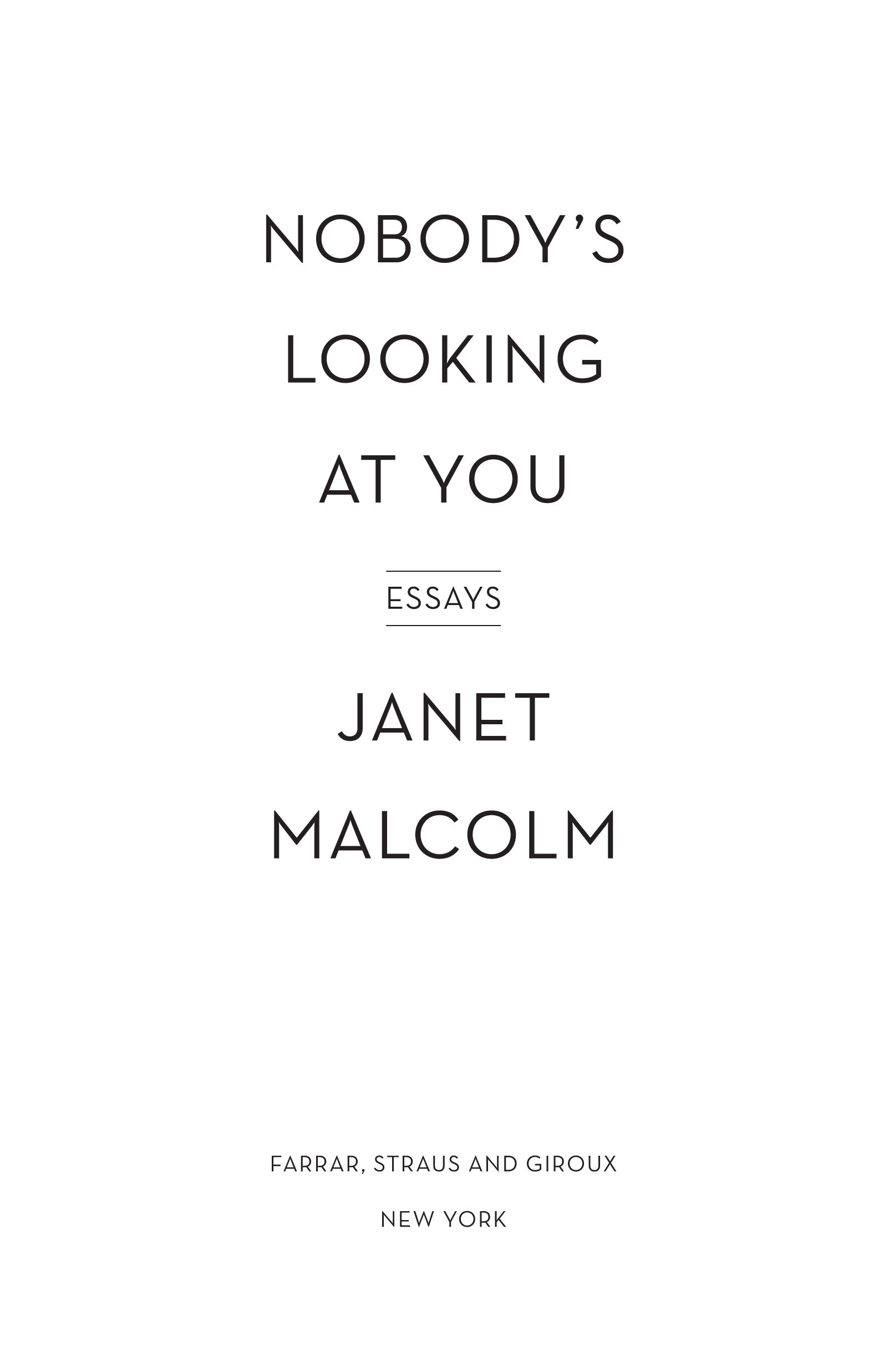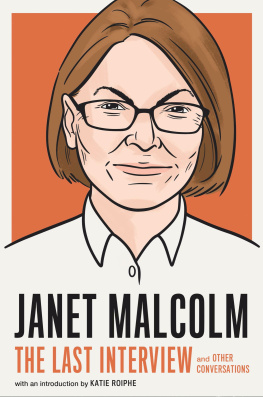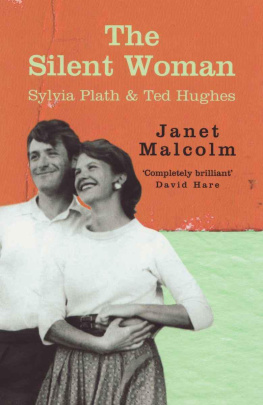Janet Malcolm - Nobody’s looking at you - Essays
Here you can read online Janet Malcolm - Nobody’s looking at you - Essays full text of the book (entire story) in english for free. Download pdf and epub, get meaning, cover and reviews about this ebook. year: 2019, publisher: Farrar, Straus and Giroux, genre: Art. Description of the work, (preface) as well as reviews are available. Best literature library LitArk.com created for fans of good reading and offers a wide selection of genres:
Romance novel
Science fiction
Adventure
Detective
Science
History
Home and family
Prose
Art
Politics
Computer
Non-fiction
Religion
Business
Children
Humor
Choose a favorite category and find really read worthwhile books. Enjoy immersion in the world of imagination, feel the emotions of the characters or learn something new for yourself, make an fascinating discovery.

- Book:Nobody’s looking at you - Essays
- Author:
- Publisher:Farrar, Straus and Giroux
- Genre:
- Year:2019
- Rating:3 / 5
- Favourites:Add to favourites
- Your mark:
- 60
- 1
- 2
- 3
- 4
- 5
Nobody’s looking at you - Essays: summary, description and annotation
We offer to read an annotation, description, summary or preface (depends on what the author of the book "Nobody’s looking at you - Essays" wrote himself). If you haven't found the necessary information about the book — write in the comments, we will try to find it.
Nobody’s looking at you - Essays — read online for free the complete book (whole text) full work
Below is the text of the book, divided by pages. System saving the place of the last page read, allows you to conveniently read the book "Nobody’s looking at you - Essays" online for free, without having to search again every time where you left off. Put a bookmark, and you can go to the page where you finished reading at any time.
Font size:
Interval:
Bookmark:


The author and publisher have provided this e-book to you for your personal use only. You may not make this e-book publicly available in any way. Copyright infringement is against the law. If you believe the copy of this e-book you are reading infringes on the authors copyright, please notify the publisher at: us.macmillanusa.com/piracy.
In memory of Robert Silvers
There is a wish shared by women who consider themselves serious that the clothes they wear look as if they were heedlessly flung on rather than anxiously selected. The clothes of Eileen Fisher seem to have been designed to fulfill that wish. Words like simple and tasteful and colors like black and gray come to mind along with images of women of a certain age and classprofessors, editors, psychotherapists, lawyers, administratorsfor whom the hiding of vanity is an inner necessity.
The first Eileen Fisher shop opened in 1987, on Ninth Street in the East Village. Today, Eileen Fisher is an enterprise with nearly a thousand employees. The clothes sell in department stores and catalogues as well as in six Eileen Fisher shops in Manhattan and fifty-five throughout the country. Over the years, the clothes have become less plain and more like the clothes in fashion. Some of the older Eileen Fisher customers grouse about these changes. They want the clothes to remain the same, as if anything can. Surely not clothes.
I remember going into the Eileen Fisher shops that were opening around the city in the late 1980s and never buying anything. I was attracted by the austere beauty of the clothes. They were loose and long and interesting. There was an atmosphere of early modernism in their geometric shapes and murky muted colors. You could see Alma Mahler wearing them around the Bauhaus. But you could not wear them yourself if you werent fairly stately. After a few years, the clothes changed and began to suit small, thin women as well as tall, substantial ones. But their original atmosphere remained. I joined a growing cadre of women who regularly shop at Eileen Fisher and form a kind of cult of the interestingly plain.
One day in February, I went to talk with Eileen Fisher at her house, in Irvington, New York, and was immediately struck by her beauty. She does not look like a woman who is uninterested in her appearance. She looks glamorous and stylish. She is slender and fine-boned. Her straight, completely white hair is cut in a geometric chin-length bob. She wears dark-rimmed glasses. Her features are delicate, and there is a certain fragility about her, an atmosphere of someone who needs protection. And she came to the interview protected, by two executives in her company: Hilary Old, the Vice President of Communications, and Monica Rowe, the Director of Public Relations. I was received in a large, light room that looks out on the Hudson River and its distant shore (the river is magnificently wide here) through a picture window. A lunch of choice dishescrab cakes, rice salad, a salad of winter squash and goat cheesehad been laid out on a long table. Eileen (as I will call her, as one calls Hillary Hillary) presented herself as someone who is still trying to overcome an innate awkwardness and shyness and verbal tentativeness. Speaking and writing have always been hard for me, she said as her colleagues looked on fondly and encouragingly, as if at a relative with an endearing quirk.
She apologized for the lunch that clearly needed no apology. But she had planned to serve sushi prepared by her Japanese cook, who had been called away at the last minute. That Eileen Fisher had a Japanese cook did not surprise me; nor did the story she told a few minutes later about a fateful chance encounter with a Japanese designer who became her employer and lover. A sense of Japan hovers over Eileen Fishers modernism (as it does, when you think about it, over modernism itself).
When the encounter with the Japanese designer took place, in the mid-1970s, she was a young woman from the Chicago suburb of Des Plaines (Home of McDonalds, Anywhere, U.S.A., in her description) who had recently graduated from the University of Illinois as a home ec major and had come to New York to become an interior designer. But she wasnt succeeding. I wasnt good with words, she said. I wasnt that good with people, either. I couldnt explain my ideas to clients. To support herself, she waited on tables and also took small graphic-design jobs. One day, while at a printing shop to which she had brought a design for stationery, this Japanese guy was also printing something, and he looked at my design and liked it and said, Im a graphic designer, and I need an assistant. Would you apply for the job? I applied and he hired me and we ended up getting into a relationship. I moved in with himthat was kind of a mistakebut the working part of it was a great experience. His name was Rei. We went to Japan to work on advertising projects for clients like Kirin beer and a large stationery company and a big chemical company. We needed to present a lot of ideas, to throw in a lot of stuff, so he had me throw in my designs. Then weird things would happen, like they would pick my design. And he would get upset. I think he thought I was this little assistant, I was nice and cute or whatever I was. When they picked my design, it created a problem in our relationship. The relationship did not survive the problem (of her talent), but the lesson of Japan stayed with Eileen: I got inspired. I saw the kimono. I saw it worn different ways. I saw all those little cotton kimonos and those kimono things they wear in the rice paddies and tie back and little flood pants. I was intrigued by the aesthetic of Japan. The simplicity of it. I was already interested in simplicity from interior design. And Rei was really minimal. But it was the kimono that inspired me. The piece youre wearing is an extension of the kimono.
The piece I was wearing was a heavy, charcoal-gray wool cardigan sweater that I bought at an Eileen Fisher shop six or seven years ago and rarely wear because it is rarely cold enough to wear it. But the day was bitterly cold and raw and windy, and it was not too warm inside to be wearing it. The sweater is a remarkable garment. On the hanger it looks like nothingit is buttonless and ribbed and boxybut when worn it becomes almost uncannily flattering. Everyone who wears it looks good in it. Eileen then said something surprising, namely that she had not designed my sweater. Twenty years earlier, she had stopped designing; she had turned this work over to a design team that has been doing it ever since, at first under her supervision and now under that of a lead designer.
I stored that idea about the kimono, Eileen went on. After Rei and I split up, I went about my business. I tried to make a living. I did apartments, stationery, small things. I designed a tofu package. But this idea kept haunting me, this clothing thing, the kimono. I was living in Tribeca and had artist friends and designer friends. I was dating a guy who was a sculptor. He was designing jewelry, and he had taken a booth at a boutique show where owners of small clothing stores from around the country come to New York to buy clothes and accessories from small designers. He took me to the show, and I remember looking around and going, I could do this. I had never designed any clothes, but I could picture it, I could see clothes I had designed on the walls.
Font size:
Interval:
Bookmark:
Similar books «Nobody’s looking at you - Essays»
Look at similar books to Nobody’s looking at you - Essays. We have selected literature similar in name and meaning in the hope of providing readers with more options to find new, interesting, not yet read works.
Discussion, reviews of the book Nobody’s looking at you - Essays and just readers' own opinions. Leave your comments, write what you think about the work, its meaning or the main characters. Specify what exactly you liked and what you didn't like, and why you think so.








